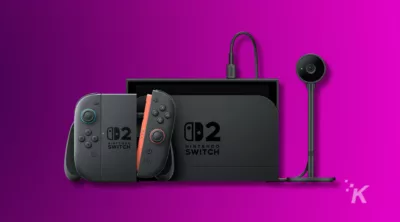Gaming
Review: For Honor – paper, rock, Valhalla
Defend, fight, protect, for your future, for your lineage, For Honor.

Just a heads up, if you buy something through our links, we may get a small share of the sale. It’s one of the ways we keep the lights on here. Click here for more.
For Honor is a game that demanded a little longer than your normal review because it’s honestly a game unlike anything else on the market.
By now, you’ve seen the marketing and undoubtedly know that For Honor is a game that pits Knights vs Samurai vs Vikings. It’s a tricky troupe because while it’s divided into factions, the game never really clarifies the origins of the factions, just that they essentially fight under the same banners.
The Story
Diving into For Honor’s story tells an intricate story of the Knights seemingly defending their lands from the advancing threats, while the Vikings are not only at war with the other factions, but also with themselves, and the Samurai are simply fighting in order to restore peace. Each faction gets their own section of the storyline, starting with the Knights and following the lead of their Knight-Commander Apollyon. However, as the story unfolds, so do her true intentions – and she’s appropriately named – Apollyon is greek for “The Destroyer”.
The story mode is beneficial in a game where campaigns are mostly ignored because not only does For Honor teach you game mechanics, it’ll also gives you a taste of how to use and how to fight the classes of For Honor’s factions.
Classes & Characters
Image: YouTubeIf you’re familiar with games that are super Multiplayer focused, For Honor follows the same “Battlefield” type class scheme. Each faction has a vanguard character, which is basically the balanced character that beginners can pick up and roll with. These characters don’t have any of the gimmicks the more advanced characters have, such as the Peacekeeper’s non-default stance or the extremely limited window of blocking opportunity. Instead, For Honor is a high-risk, high-reward combat simulator where playing the right archetype can make you an asset or a burden on your team. If your team already has two heavies, maybe consider a vanguard or a hybrid. Battles involve strategy as well as combat mastery in order to be victorious.
The other class types consist of the Heavy – characters such as the Warlord or the Shugoki who move slowly but hit like a freight train, the Assassin – characters like the Berserker and the Orochi which attack with quick flurries and combos meant to overwhelm opponents and interrupt stronger attacks, and the Hybrid – characters like the Lawbringer and the Valkyrie who offer the best of both words attacking with long-reaching weapons and calculated but deliberate damage.
Image: OverClockersThe best part about these characters is while they are divided by classification, they all feel completely unique and offer different strategies for each faction. If you take the Assassins as an example, the Peacekeeper excels by moving in close and attacking a few times, then dashing off in order to survive. The Berserker, on the other hand, gets right in the face of opponents and basically shrugs off blows in favor of pure assault, attacking with multiple ax swings often ending in the death of their opponents if they can survive the onslaught of resistance. The Orochi doesn’t fight quite the same as either, but benefits from precision strikes that inflict super high damage without leaving themselves vulnerable.
The differences here should be commended, as they have actively worked to provide unique experiences as opposed to copying and pasting archetypes, which other franchises lazily rely on.
Combat
Image: YouTubeCombat in For Honor is essentially boiled down into a paper, rock, scissors style of stance dancing. It’s one part Dynasty Warriors, one part Bushido Blade, and all parts enjoyable. You can block or attack from the left, right, or overhead areas. Using on-screen indicators you will match your arrow to your opponents in order to block, doing so while the arrow is flashing will cause you to parry attacks and knock your enemy off balance allowing for big counter attacks or grapples.
Attacking works in the same way, where you’ll want to keep your opponent guessing by constantly changing the direction of your attacks while being mindful of your choices. You certainly don’t want to be parried, or worse grappled and thrown to your immediate and unfortunate death. If your opponent relies too heavily on using their guard stance to defend, you have the option to attempt a guard break, which will knock your opponent out of guard stance and allow for a quick attack. Attempting to guard break again will initiate a grapple, which lets you “throw” your opponent allowing you time to charge up a strong attack for big damage.
Image: 99HacksYou can also use your environment to quickly dispatch those who would carelessly attack you. Grappling is less of a bodyslam or a throw, and instead a swift kick to the chest, which means For Honor allows you to do your best 300 impression as you shout “THIS IS SPARTA!” as you kick an opponent off a bridge, over a ledge onto sharped wooden poles in the water below, into a waiting fire pit, or into a blazing inferno or a scalding bubbling hot spring jet.
While For Honor does a lot right with the intricate combat, attention to detail in classes, balancing, and presentation of the game as a whole, the game options are fairly limited and can quickly become repetitive.
Modes
Image: Hardcore GamerDuel mode consists of a best of five with either one player, one AI, or partnered up for two-vs-two battles. Deathmatches are divided into Elimination and Skirmish modes. These modes while similar offer slight differences: Elimination is a 4v4 fight where each player is matched with another in a duel type facing, where you can either fight your opponent honorably while your team does the same, or you can choose to be dishonorable and flee from battle, jump another player engaged in a fight, and collect powerups scattered along the battlefield to further attempt to increase your teams chances of winning.
Skirmish mode dispatches minions to the field and your 4v4 battle turns into a battle of “first to 1,000”, with the first team reaching 1,000 causing the other team to “break” which gives the opposing team a limited time to respawn and those who are executed stay dead. Dominion is pretty much the exact same thing as Skirmish, except it also has control points (which most people recognize as Domination) to hold which give points passively while held.
Final Verdict
There’s a lot of potential on the table with For Honor, and the game will ultimately benefit with continued support both from the community as well as Ubisoft and the development team. I’d really love to see a 4v4 mode where a buff exists in the center and that buff makes one player supercharged, dropped once killed to empower another, or a One vs All mode where 4 players fight a boss character like Apollyon, Ragnar, or General Tozen.
I believe For Honor will benefit in the same way that Rainbow Six: Siege has, while being released between two massive PlayStation exclusives, seeing far more attach rates in the months where releases are fewer and further between and the base price of the game has dropped.
Make no mistake about it, while it’s difficult to suggest that those who aren’t competitive gamers should rush right out to pick up For Honor, it absolutely should be commended for its intricacies and is worth your eventual purchase and play time. This is a game that I fully endorse supporting to show game developers that you appreciate the attention to detail and not copy and pasted lifeless characters for the sake of bumping up the roster. For Honor is a smashing (get it? because swords and hammers smashing shields and armor) a good time, and is one of the freshest attempts at a unique game feel in quite some time.
For Honor was reviewed using the PS4 version and was provided for review by Ubisoft.
[letsreview postid=”44990″]
































